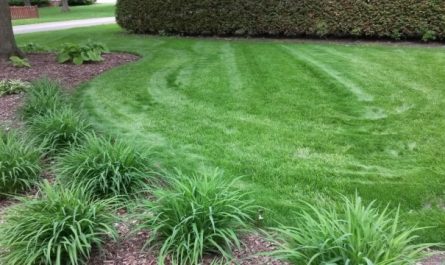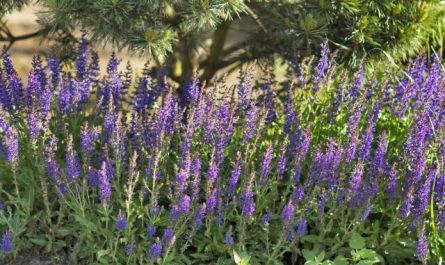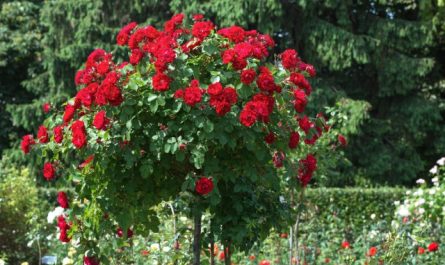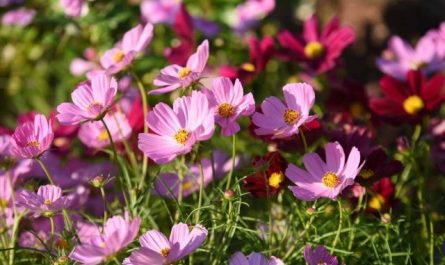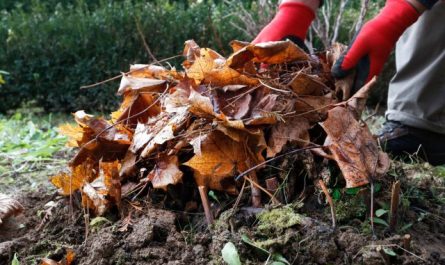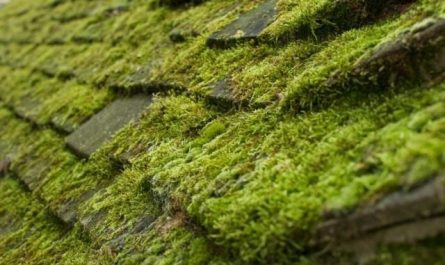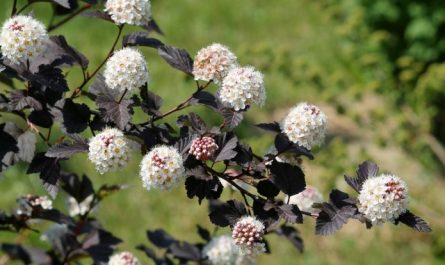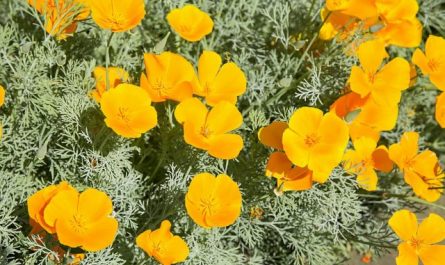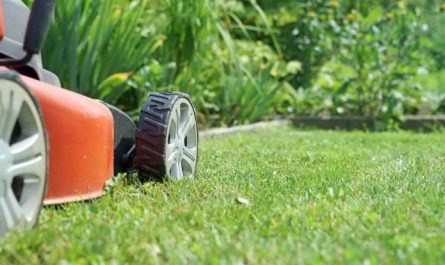The search for original solutions in garden design makes designers and gardeners all over the world look for alternatives to traditional options for arranging areas and corners for relaxation. A ring-shaped flowerbed, surrounding a cozy corner and as if embracing it in blooming embraces, is a variable, colorful, but already boring way of landscaping. One of the most interesting ways to surprise is to arrange a walking area in front of a relaxation corner. Flower beds intended for walks, offering to enjoy colorful ensembles along paths, provide much more opportunities to find fresh ideas.

A blooming walking area is a great alternative to a ring-shaped flowerbed around a relaxation area.
To design a whole walking area around a relaxation corner instead of the usual flowerbed that surrounds it in a ring or hoop is a bold but not risky decision. A walking area is a flowerbed laid out on both sides of the path, as if embracing it, or a series of flowerbeds that, instead of a direct approach to the area, offer to first walk through the flowering ensembles, turn to the side, deviate, and, if desired, even stroll in a sea of flowers.
In fact, depending on the type of such walking area, they are divided into:
- a continuous flower bed with a path running through it;
- a series of flower beds with narrow paths between them.
The latter option is often chosen for a garden with geometric shapes, the former – for gardens designed in a natural style. But if desired, you can experiment and give severity to a solid flowerbed or softness and naturalness to flowerbeds in a geometric frame. But achieving the same effect of stylistic unity with the garden when mixing forms will be much more difficult.

Features of the arrangement of the walking area in front of the recreation area
To implement this type of landscaping in front of the recreation area, you will need a lot of space. The “walking” method of solving the problem of decorating the recreation area is much more labor-intensive. Instead of the usual surroundings, you get a full-fledged colorful area that you can walk around. The arrangement of a blooming walking area has its own purely practical limitations:
- You can plant such a flower bed for walks only in front of a recreation area or a recreation corner, adjacent to a hedge or resting against a fence located along the perimeter lines of the plot. The recreation corner should be the final point, the final goal of the “journey”.
- The walking area should be at least 4-5 times longer than the rest area itself (if you have a small area with a bench of about 1 square meter, then the colorful ensemble in front of it should stretch 4-5 meters in front). But whether to make the flower beds wide or limit yourself to a narrow meter-long strip or border is up to you.
- In order for this design to “play”, you need to carefully consider protecting the relaxation corner from prying eyes: since only flower beds will be located in front, there should be a “blank” wall or fence behind the corner, completely creating a feeling of coziness, privacy, and security.
A significant difference between a walking area and any other design option for the area in front of a recreation area is the absence of so-called protective elements, screens or tall plants that will close the area from prying eyes and make it partially hidden, concealed. With such landscaping, the corner itself should be clearly visible. And to create the same atmosphere of security, a simple wall behind is not enough.
For coziness and a special atmosphere, it is necessary to include decorative trees and shrubs, high accents, which will partially replace the protective elements themselves. Additional lush bushes, planted in the back corners of the site, or an installed arch or pergola look very good “inscribed” into the background, placed on the sides, right next to the fence or hedge. Climbing roses with wisteria, white dogwood (cornus alba), spirea, deutzia, lilac, mock orange – unpretentious and hardy picturesque shrubs – can be used as such guardians-defenders.
The first thing you should think about when designing a walking area is the paths. They can be divided into central and side paths. Moreover, it is not necessary to lay the latter. The central path should be wide enough and connect the “entrance” with the rest area itself. The side paths are narrow, with any paved or temporary covering, or even stepping paths that “lead” into the flowerbed or are laid between the flowerbeds.
It is easy to make the right decision and determine which specific path layout option is right for you: walk around the area and think about how exactly you can diversify the path to the rest area. But there are also reliable landmarks that will help you find the right path.

To make the walking area not seem like just a large flowerbed, it is not just a path leading to a bench or a rest area. A mandatory condition for turning a series of flowerbeds or ribbon flowerbeds into a walking area is at least one bend, a turn in the path that breaks up the straight paths. The easiest way to solve the problem of “looping” in a landscape style: paths laid in smooth, curving lines can be turned as you like, surrounding winning ensembles with them, and sometimes moving away from, sometimes approaching the best plants.
But if you use the classic version with straight paths, you will have to think about the most rational solution. In a garden where chessboard motifs or path intersections at right angles were previously used, in the walking area, perpendicular to the main path, you can lay several narrow paths that intersect and delineate decorative ensembles. When designing a series of geometrically shaped flower beds, the paths should serve as dividers and surround the ensembles along the perimeter. But if the flower bed is spread out on both sides of the path without division, then you will have to play with the direction by modifying the central path itself.
In the middle of the path or a little closer to the rest area, place a “medallion” – a round or any other expansion platform with any central element that will need to be walked around. In the center of such a “medallion” you can place a garden sculpture, a tub with plants, a small fountain, or just a funny object like a painted watering can or a mini-mill. The main thing is that such an object interrupts the linearity of movement and changes direction.
The second important element is borders. They are actually needed only when designing a series of flower beds in a strict style, but it is better to design the front edge with a special border of ground covers even on a natural flower bed, so that the transition between paths and ensembles is as effective as possible. For strict flower beds, the classic choice is boxwood borders, in addition to which it is better to provide several green sculptures on the flower bed itself as strict accents. But for natural plantings, combine the best low-growing perennials – for example, yaskolka, alchemilla, geyheras, subulate phlox, geraniums.
As for the composition itself, it should be as complex in structure as possible. Several visual peaks, alternation of high and low plants, placement of contrasting accents, use of texture and color will help to form a flowerbed so that not a single corner of it is boring. Remember that your walking area should not seem flat, monotonous, and its vertical expressiveness should be as bright as the combinations of solo and partner plants.

Selecting Plants for Flowering Walking Areas
As with any other option for landscaping a recreation area, choosing plants for a series of flower beds in a walking area is not an easy task. It is necessary not only to find the most colorful and fragrant options, but also to lay out flower beds over a fairly large area without complicating the care of the garden as a whole. And decorativeness is not the main guideline. For walking areas leading to a recreation corner, you need to find durable, long-lasting plants that can create beautiful flowering compositions that do not require special care.
The so-called “village” plants, country style stars, capable of creating multi-colored and lush “solid” plantings, look good in such a zone. The obligatory condition is continuous flowering.
The main stars of such walking areas are herbaceous perennials from among the most resistant species. And also: plants with different periods of abundant flowering, with attractive greenery throughout the active season and resistant to diseases and pests. Always appropriate in such ensembles:
- yarrows (achillea), especially hybrid ornamental flowering varieties such as ‘Terracotta’ and ‘Gold Plate’;
- Euphorbia seguieriana, which forms elegant spherical bushes;
- inimitable goldenrod (solidago);
- various species of shade-tolerant sedges (carex);
- luxuriant-leaved bergenia;
- the beautiful alchemilla in the foreground with its yellow explosion of colour;
- the amazingly hardy heather aster (aster ericodes, which from a botanical point of view is more correctly called Symphyotrichum ericodes, but this name does not take root at all here and the plants continue to be called simply asters) or the more colorful and “authentic” chamomile aster, or Italian aster (aster amellus);
- modest but colorful small-petaled erigeron;
- charmingly lush and watercolour-weightless astilbes of all types and varieties;
- herbaceous peonies (paeonia lactiflora) with their huge inflorescences and watercolour beauty;
- Coreopsis verticillata with its late flowering;
- the best vertical accent for the lazy is Physostegia;
- garden geraniums (in particular, the inimitable Himalayan geranium (geranium himalayense);
- a luxurious daylily with bright blooms and beautiful clumps (hemerocallis);
- miniature and bush bed roses;
- Phlox paniculata, covered with bright pastel caps;
- Lysimachia punctata, which displays yellow flowers;
- delphiniums (Delphinium) with their lacy, slender candles of inflorescences;
- abundantly colored crowded bells (campanula glomerata);
- the inimitable blue-flowered perennial sage (salvia nemorosa);
- one of the best filler partners is Nepeta faasenii;
- no less textured is the spicate speedwell (veronica spicata);
- the tireless Iberis saxatilis, etc.


